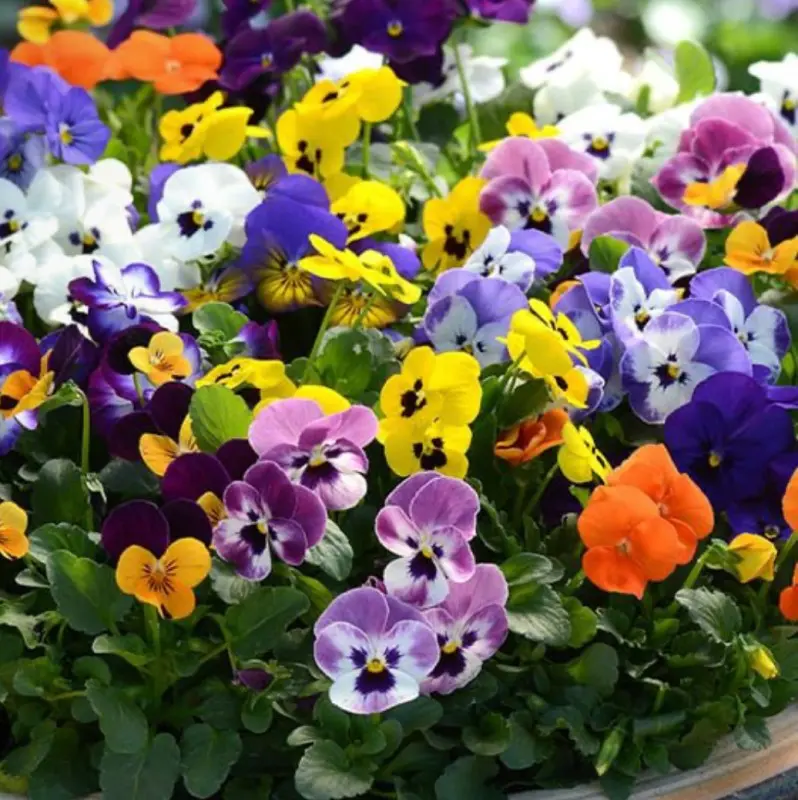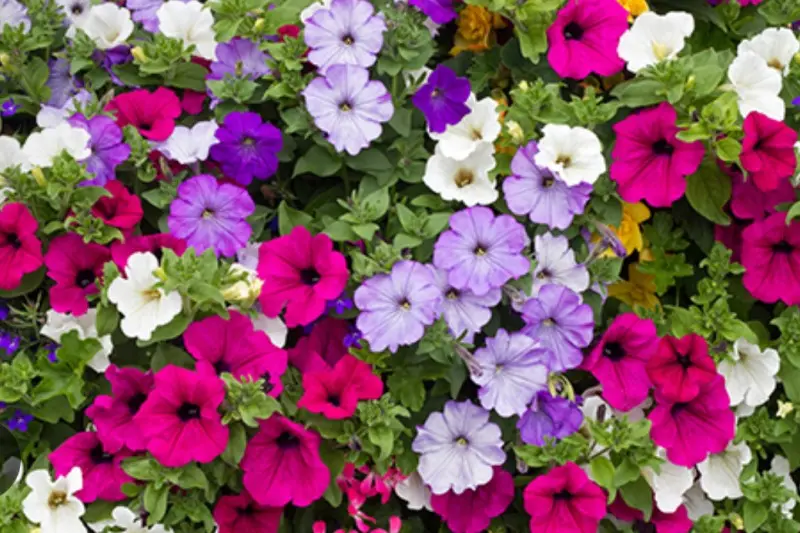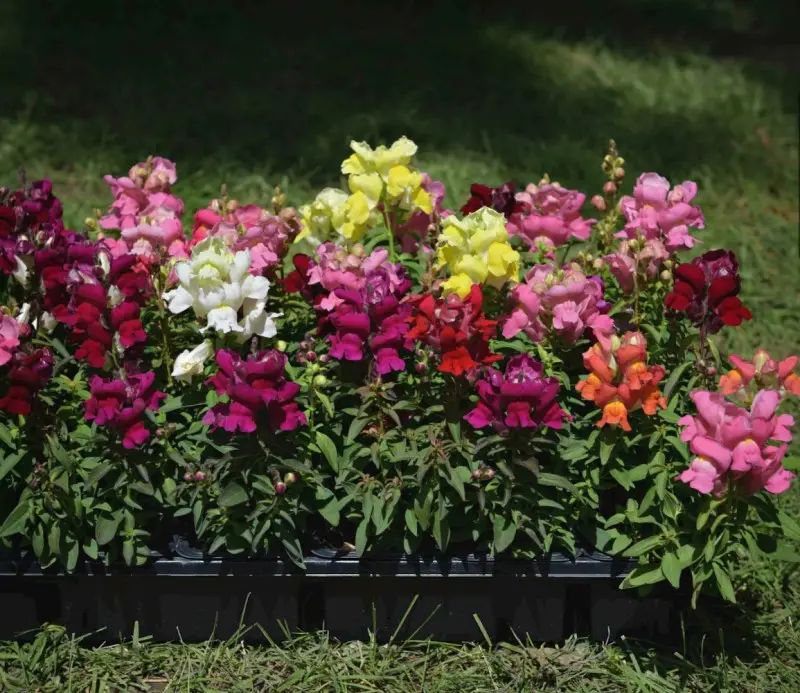-

Violas
$0.00
Winter
6 to 10 inches tall
Not Deer Resistant
-
Violas (Viola spp.) are charming, cool-season flowering plants known for their delicate, often multi-colored blooms that add a touch of elegance and color to gardens in early spring and fall. Closely related to pansies, violas tend to have smaller flowers but are known for their prolific blooming, with flowers in shades of purple, yellow, blue, white, and bicolor combinations. Their cheerful, vibrant appearance makes them a favorite for garden beds, borders, containers, and even hanging baskets.
Violas typically grow 6 to 8 inches tall with a similar spread, forming low, compact mounds that create a lush, colorful display. These hardy plants thrive in USDA zones 6-10 and prefer full sun to partial shade, especially in warmer regions where some afternoon shade helps them last longer. Violas grow best in well-draining, fertile soil that retains some moisture, as they prefer consistent watering during dry periods. In cooler climates, violas bloom from early spring through summer and again in fall, while in warmer areas, they shine in fall through early spring, providing color when few other plants are in bloom.
Easy to grow and relatively low-maintenance, violas benefit from occasional deadheading to encourage new blooms throughout the season. They are generally pest-resistant but may attract slugs or aphids in damp conditions. With their colorful, long-lasting flowers and compact growth habit, violas bring beauty and seasonal interest to garden spaces. Their versatility and charm make them ideal for both formal and informal garden settings, brightening up borders, containers, and window boxes with ease.
-

Petunias
$0.00
Spring/Fall
6 to 18 inches tall
Not Deer Resistant
-
Petunias (Petunia spp.) are popular flowering annuals loved for their colorful, trumpet-shaped blooms and long-lasting display. Native to South America, petunias come in an array of vibrant colors, including shades of purple, pink, red, white, yellow, and blue, as well as striped and bicolored varieties. Blooming from spring until the first frost, petunias are often used to add bold splashes of color to garden beds, borders, containers, hanging baskets, and window boxes.
Petunias typically grow 6 to 18 inches in height and spread 12 to 24 inches, depending on the variety. They thrive in USDA zones 9-11 as perennials but are commonly grown as annuals in most climates. Petunias prefer full sun for the best flowering display, though they can tolerate partial shade in warmer areas. They do best in well-draining, moderately fertile soil and benefit from regular watering to keep their flowers lush, especially in hot weather. Some varieties, such as Wave Petunias, are bred to be highly drought-tolerant and have a vigorous, spreading habit, making them ideal for ground cover or cascading over container edges.
Low-maintenance overall, petunias benefit from regular deadheading to encourage continuous blooms, though many modern varieties are self-cleaning. They can also benefit from periodic feeding to support their flowering. While they are generally pest-free, petunias may attract aphids or caterpillars in humid conditions. With their wide range of colors, ease of care, and ability to bloom throughout the growing season, petunias are a versatile choice that adds vibrant, season-long color to both formal and informal gardens.
-

Dianthus
$0.00
Spring/Summer/Fall/Winter
6 to 12 inches tall
Deer Resistant
-
Dianthus (Dianthus spp.), commonly known as Pinks or Carnations, is a charming flowering plant admired for its delicate, fringed petals and sweet, clove-like fragrance. Native to Europe and Asia, Dianthus comes in a range of colors, including shades of pink, red, white, purple, and bicolors. Known for its star-shaped, often ruffled blooms, Dianthus is a popular choice for garden borders, rock gardens, and containers, adding color and scent from late spring through fall.
Dianthus plants typically grow from 6 inches to 18 inches in height, depending on the variety, and feature narrow, bluish-green foliage that provides a soft, textural contrast to the flowers. These plants thrive in full sun and well-draining, alkaline soil enriched with organic matter. Although Dianthus is moderately drought-tolerant once established, it benefits from regular watering to maintain blooms, particularly during dry periods. Hardy in USDA zones 3-9, many Dianthus varieties are perennial, allowing them to return year after year, while others are grown as biennials or annuals in cooler climates.
Easy to care for, Dianthus requires minimal maintenance beyond occasional deadheading, which promotes additional blooming and prevents the plant from becoming leggy. It is generally resistant to pests and diseases but may attract occasional aphids or slugs in wet conditions. With its delightful fragrance, long-lasting blooms, and compact form, Dianthus is a versatile plant that enhances gardens with color, scent, and texture, making it a popular choice for gardeners seeking low-maintenance beauty in borders, beds, and containers.
-

Begonias
$0.00
Spring
6 to 18 inches tall
Not Deer Resistant
-
Begonias (Begonia spp.) are beloved flowering plants known for their vibrant, long-lasting blooms and lush, decorative foliage. These versatile plants come in an impressive variety of colors, shapes, and sizes, making them ideal for adding color and texture to gardens, borders, containers, and indoor spaces. With blooms in shades of pink, red, white, orange, and yellow, begonias are known for their season-long flowering from spring through fall, particularly when grown in shaded to partially shaded areas. Their ability to thrive in lower light conditions makes begonias popular for brightening up shaded corners and covered areas.
Begonias are available in several types, each with unique qualities suited to different planting environments. Wax Begonias (Begonia semperflorens) are compact plants with rounded, waxy leaves, making them ideal for garden beds and borders. Tuberous Begonias (Begonia tuberhybrida) feature large, showy blooms in bright colors and work wonderfully in hanging baskets or containers. Rex Begonias (Begonia rex-cultorum) are primarily grown for their striking, variegated foliage and are popular both as houseplants and in shaded gardens. These varieties allow gardeners to choose begonias that fit specific aesthetic and functional needs within their landscaping designs.
To thrive, begonias prefer well-draining, slightly acidic soil enriched with organic matter, as well as partial to full shade to protect them from intense sun, which can scorch their leaves. These low-maintenance plants benefit from regular watering, ideally keeping the soil moist without becoming waterlogged, as well as periodic deadheading to encourage more blooms and maintain a compact shape. Although begonias are generally pest-resistant, they may attract snails and slugs in damp conditions. With their colorful flowers, attractive foliage, and adaptability to both indoor and outdoor environments, begonias are a favorite choice for bringing elegance and season-long color to shaded gardens, patios, and home interiors.






